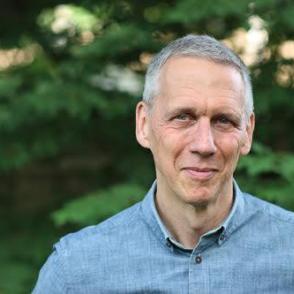Patrick O’Connor (opens in a new window) walks where dinosaurs once roamed and puts together the pieces of their environment left behind some 75-66 million years ago.
His research spans from animals alive today to those that existed long ago during the Late Cretaceous Period in Madagascar, eastern and northern Africa, and Antarctica. His work includes not only describing species new to science but also rigorously interpreting the ecosystems in which they lived.
Combining expeditionary fieldwork with laboratory- and museum-based comparative biology, O’Connor’s research utilizes multiple approaches to address hypotheses related to the evolution of organisms, ecosystems, and the Earth in a deep-time context. With continuous funding from the National Science Foundation and the National Geographic Society, he has discovered and named several new dinosaurs, crocodiles, and mammals while revealing novel insights about the changing face of the planet over the past 70 million years.
O'Connor's passion for his research is fueled by its multi-disciplinary nature. He works with diverse teams of biologists and geologists, along with artists and science communicators, to contextualize the recovered fossils and characterize past biotas and ecosystems from some of the most remote places on the planet. Together, they paint new pictures of life on Earth on southern hemisphere landmasses immediately preceding the planet's last mass extinction event at the end of the Mesozoic Era.
His work exploring ecosystem dynamics, animal extinction, and biotic recovery following mass extinctions is critical for understanding of how organisms fit within their ecosystems and how ecosystems respond to large-scale environmental change on the planet.
O'Connor is professor of neuroscience and anatomy in biomedical sciences (opens in a new window) in the Heritage College of Osteopathic Medicine, director of educational programs in the Heritage College Office of Research and Grants, and a member of the Ohio Center for Ecological and Evolutionary Studies (opens in a new window).






























